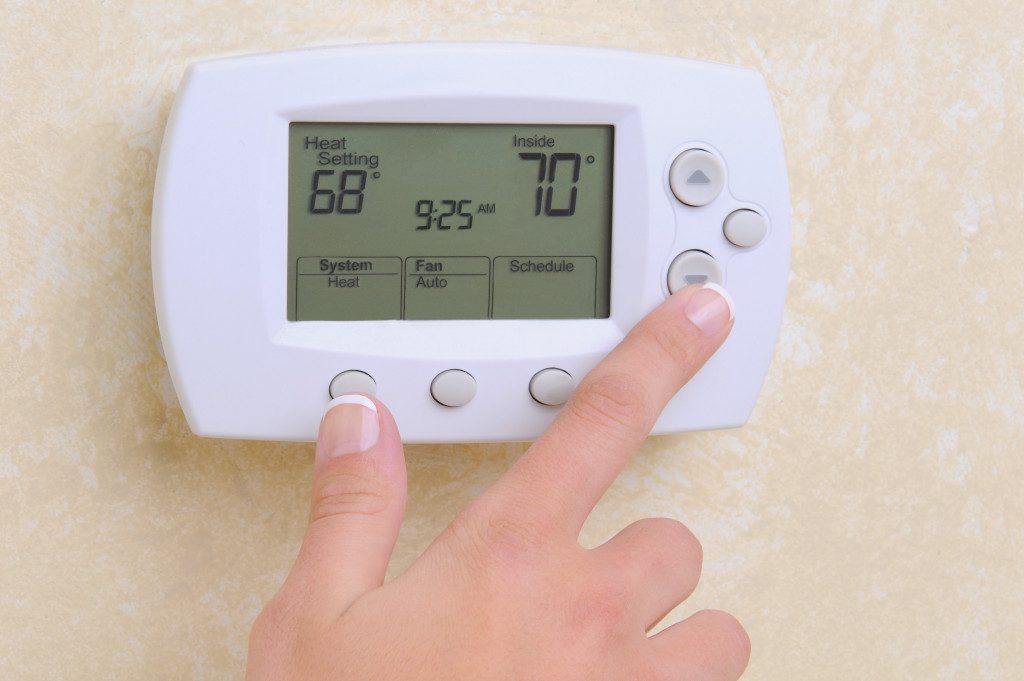- Office layout and furniture arrangement can enhance productivity by promoting effective communication and providing comfort.
- Appropriate lighting, including natural, overhead, task, and ambient lighting, can reduce eye strain, boost mood, and enhance focus.
- Color schemes affect productivity; calm tones like blue and green enhance focus and tranquility, while bright colors might overstimulate.
- Maintaining optimal office temperature, between 70-73 degrees Fahrenheit, can prevent productivity decline due to discomfort.
- A tech-friendly office with easily accessible equipment and software ensures smooth operations, fostering efficient service delivery.
As a business professional, your employees must be as productive as possible. Productivity is essential to the success of any business, and it all starts with the office environment. If your office is not designed to promote productivity, you might lose out on potential success. This blog post will highlight some office adjustments you can make to boost employee productivity, from furniture arrangement to lighting and everything in between.
Furniture Arrangement:
The way you arrange furniture in your office can significantly affect employee productivity. Position desks so that employees can communicate effectively with each other and try to create a comfortable, collaborative environment that allows them to work together. Also, ensure that desks face natural light sources and are not obstructed by screens or equipment. A comfortable, ergonomic chair and desk can also improve employee productivity.
Some offices also thrive more with secluded areas for employees to work in peace. If you have a large office, consider investing in office cubicle walls that provide employees with private space to work. This helps maintain a quiet, focused work environment that encourages productivity.

Lighting:
Poor lighting can have adverse effects on employee productivity. It can cause eyestrain, headaches, and fatigue. According to research, the ideal office lighting should be bright enough to illuminate the entire workspace but not too bright that it causes eye strain. Different types of lighting should be used to create a better atmosphere.
Natural light
Natural light is always the best option. Sunlight streaming in through the windows provides a natural, bright, and cheerful atmosphere. Sunlight also has mood-boosting benefits that can help increase employee productivity. Keep window curtains open for as long as possible to take advantage of natural light throughout the day.
Overhead light
Overhead lighting should supplement natural light and keep the office bright even when the sun is not shining. The ideal type of overhead lighting for offices is cool white LED lights that provide a good illumination level without causing eye strain.
Task Lighting
Task lighting can help employees focus on specific tasks, especially if they need to look at documents or computer screens for extended periods. Lamps can be used to provide task lighting, or you could invest in adjustable LED lights that can be moved around the workspace as needed.
Ambient Lighting
If you want to create a different mood in your office, try ambient lighting. Soft, warm yellow lights can create a pleasant atmosphere that encourages productivity. Ambient lighting should be used sparingly and not be too bright or overwhelming.
Color schemes:
The colors you choose for your office can affect employee productivity, so choosing a color scheme that matches the nature of your business and promotes positivity is essential. For example, green promotes calmness and tranquillity, while blue promotes focus and efficiency. Yellow fosters creativity, while purple encourages balance and harmony. Blue is a great color for offices, as it is known to be calming and can help reduce stress levels in the workplace.
However, you should avoid bright colors like red and neon green, as they may cause overstimulation and lead to slower productivity. Depending on the work your employees do, you may also want to consider different colors for different office areas. For example, blue for the office areas, green for meeting rooms, and yellow for brainstorming spaces.

Temperature:
When creating the perfect office environment for productive employees, temperature is critical. Both too-hot and too-cold temperatures could reduce productivity by up to 5%. An optimal office temperature is between 72 and 79 degrees Fahrenheit but may vary depending on the industry and working conditions. Some offices maintain a mild temperature all year round, while others may need to adjust the thermostat seasonally. Additionally, providing fans and blankets for employees can help keep them comfortable in any temperature.
Technology:
Create a devices-friendly environment. Ensure internet, email, and other office equipment are available to all employees and common chargers are easy to locate. Providing the necessary equipment and software your employees need to ensure smooth operations and efficient service delivery creates a path to increased productivity.
The office environment should be designed to increase productivity. Consider your employees’ needs when arranging furniture, choosing colors and temperatures, and investing in technology. You can create an office environment that promotes productivity, collaboration, creativity, and balance by making the right adjustments. This will ultimately lead to happier employees and increased business success.


